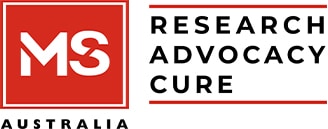- In July 2025, the Pharmaceutical Benefits Advisory Committee (PBAC) recommended adding a new form of ocrelizumab (Ocrevus®) to the Pharmaceutical Benefits Scheme (PBS) for adults with relapsing remitting MS.
- This new form of ocrelizumab is given as an injection under the skin (subcutaneously), takes a much shorter time and can be delivered by a local healthcare professional, making it more convenient.
- The process now moves to the Federal Government for final approval for inclusion on the PBS. This would make subcutaneous ocrelizumab more affordable and accessible for people with relapsing remitting MS.
The Pharmaceutical Benefits Advisory Committee (PBAC) recommended that a new form of ocrelizumab (Ocrevus®) for treating people with relapsing remitting MS be listed on the Pharmaceutical Benefits Scheme (PBS), following its July 2025 meeting.
Ocrelizumab is a monoclonal antibody treatment that targets a protein called CD20 on B cells, a type of immune cell, which play a role in the MS disease process. Ocrelizumab is already listed on the PBS for treating relapsing remitting MS, but only when it is delivered by drip (intravenous infusion). The new form of ocrelizumab is delivered as an injection under the skin (subcutaneously) and is not yet listed on the PBS, meaning it costs more. Medications listed on the PBS are subsidised and more affordable.
The PBAC looks at many factors when making recommendations, such as how effective a treatment is compared to other available medicines and how much listing a new treatment would cost the government.
MS Australia strongly advocated for this recommendation in our submission to PBAC here.
Why is subcutaneous ocrelizumab different and what do clinical trials show?
Both forms of ocrelizumab are given every six months. When ocrelizumab is delivered by drip, it takes up to three hours. Subcutaneous ocrelizumab needs less time. It is injected under the skin and takes about 10 minutes, with monitoring for at least one hour after the first injection in case of any reactions.
The subcutaneous option means people could visit their local healthcare professional for their six-monthly treatment. This would make treatment much more accessible and convenient, especially for those living in rural or remote areas where infusion centres can be far away.
A recent clinical trial (OCARINA II) compared both forms of ocrelizumab in people with MS and showed they had similar outcomes. Over 97% of participants were free of relapses for up to 48 weeks from the start of the trial and their disability levels remained stable, whichever type of ocrelizumab they received. Both treatment methods had similar safety profiles, though the injections could cause some skin reactions.
The OCARINA II trial found that 80.4% of people who tried both treatment methods liked the subcutaneous option more.
What does this mean?
This positive decision by the PBAC is the first step in the process for listing a treatment on the PBS. The process now moves to the Federal Government for final approval. If approved, subcutaneous ocrelizumab will be subsidised through the PBS and be more affordable for people with relapsing remitting MS.
MS Australia continues to advocate for overall changes that will improve the lives of people with MS and MS-related disorders. We remain committed to ensuring that all Australians living with MS and MS-related disorders can access affordable MS care.


